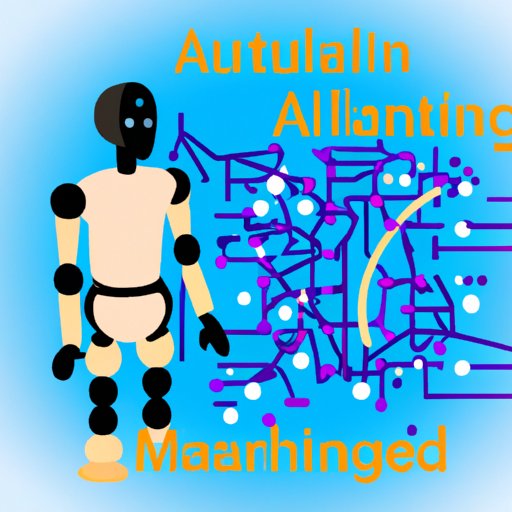Introduction
Artificial Intelligence (AI) algorithms are computer programs that can take input data, process it, and output decisions or predictions based on what they have learned from the data. AI algorithms are used in many applications, such as image recognition, natural language processing, robotics, and autonomous vehicles. In this article, we will explore the basics of building AI algorithms, their different types, debugging and optimizing techniques, and examples of successful AI algorithms.
Basics of AI Algorithms
Creating an AI algorithm involves multiple steps, including data pre-processing, feature engineering and selection, model selection and training, and evaluation. Data pre-processing involves cleaning up the dataset by removing noisy data, filling in missing values, and normalizing the data so that it is easier to work with. Feature engineering and selection is the process of selecting the most relevant features from the dataset that will be used to train the model. Model selection and training is the process of selecting the best machine learning algorithm for the task and then training the model with the selected features. Finally, the model must be evaluated to ensure that it is performing as expected.
Types of AI Algorithms
There are three main types of AI algorithms: supervised learning algorithms, unsupervised learning algorithms, and reinforcement learning algorithms. Supervised learning algorithms use labeled data to learn patterns and make predictions. Examples of supervised learning algorithms include linear regression, logistic regression, and support vector machines. Unsupervised learning algorithms use unlabeled data to discover patterns and clusters. Examples of unsupervised learning algorithms include k-means clustering and hierarchical clustering. Reinforcement learning algorithms use rewards and punishments to learn how to maximize their performance. Examples of reinforcement learning algorithms include Q-learning and deep Q-learning.
Debugging and Optimizing AI Algorithms
Debugging and optimizing AI algorithms can be a difficult and time-consuming process. However, there are some tips that can help speed up the process. First, it is important to understand the different components of the algorithm and how they interact with each other. This will help you identify any errors or bugs quickly. Second, it is important to use appropriate evaluation metrics to measure the performance of your algorithm. Lastly, it is important to use hyperparameter tuning techniques to optimize the parameters of your algorithm.

Examples of Successful AI Algorithms
There are many examples of successful AI algorithms, such as AlphaGo, which was developed by Google DeepMind and defeated the world’s best Go players. Another example is IBM Watson, which won the Jeopardy! competition in 2011. These algorithms were successful because they were able to accurately identify patterns in the data and make accurate predictions. The algorithms were also able to understand complex questions and provide accurate answers.
Conclusion
In conclusion, building AI algorithms is a complex process that involves multiple steps, from data pre-processing to model selection and training. There are three main types of AI algorithms: supervised learning algorithms, unsupervised learning algorithms, and reinforcement learning algorithms. Debugging and optimizing AI algorithms can be a challenging process, but there are some tips that can help. Finally, there are many successful examples of AI algorithms, such as AlphaGo and IBM Watson, which demonstrate the power of AI algorithms.
(Note: Is this article not meeting your expectations? Do you have knowledge or insights to share? Unlock new opportunities and expand your reach by joining our authors team. Click Registration to join us and share your expertise with our readers.)
